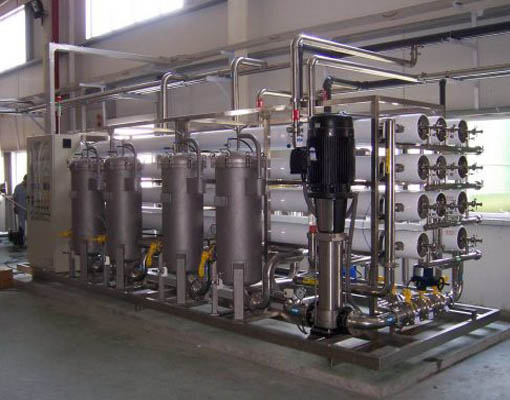Reverse osmosis (RO) systems offer power plant owners and operators a reliable and well-proven water treatment solution. However, designing and caring for an RO system requires a thorough understanding of a plant’s water supply and the technology’s capabilities. The information presented here could help plant engineers design and optimize an RO system to match their needs. Pure water does not exist in nature; all water in its natural state contains varying amounts of dissolved and suspended matter.
Osmosis is the process in which a solvent, such as water, flows through a semipermeable membrane from a less-concentrated solution to one with a higher concentration. This normal osmotic flow can be reversed (reverse osmosis) by applying hydraulic pressure to the more concentrated (contaminated) solution to produce purified water.

There are a handful of calculations that are used to judge the performance of an RO system and also for design considerations. An RO system has instrumentation that displays quality, flow, pressure and sometimes other data like temperature or hours of operation. In order to accurately measure the performance of an RO system you need the following operation parameters at a minimum:

Reverse Osmosis Plants do not deliver to service all of the water that is fed to them. During operation, some of the incoming water is used to wash down the membrane, and only part becomes finished product water. Purified water is referred to as product and wastewater is referred to as concentrate, or reject. The percent of water delivered as product is called the recovery, and depends upon the membrane and on total RO Plant design considerations.These Commercial/Institutional RO Systems are available in following Flow Ranges. For more information please call to our technical expert. Call : 7634910918

To understand the purpose and process of Reverse Osmosis you must first understand the naturally occurring process of Osmosis. Osmosis is a naturally occurring phenomenon and one of the most important processes in nature. It is a process where a weaker saline solution will tend to migrate to a strong saline solution. Examples of osmosis are when plant roots absorb water from the soil and our kidneys absorb water from our blood.
There is no perfect semipermeable membrane. A small amount of dissolved salt is also able to diffuse through, but this results in low concentrations relative to the feedwater values. The benefits of reverse osmosis (RO) technology should be well understood in water treatment for power generation, particularly because of its potential to reduce operating and maintenance expenses. For most sources of water, RO is the least expensive way to remove the majority of dissolved salts.
The term total dissolved solids (TDS) refers to mostly inorganic salts present in solution. The salts exist as cations (mostly calcium, magnesium, sodium, and potassium) and anions (mostly bicarbonate, chloride, sulfate, and nitrate). These positively and negatively charged ions can pass electrical flow, thus determining the conductivity of the water as a measurement of its TDS concentration. Pure water is a poor conductor of electricity.
For plants originally built using only ion exchange, adding RO can reduce chemical regeneration requirements by a factor of 20 or more. Complete removal of regenerable systems might even be considered. With RO upstream removing the bulk of the dissolved salts, the polishing ion exchange systems might be economically replaced with service demineralizer beds that are chemically regenerated by an offsite water service company, or they might be replaced by electrodeionization (EDI). EDI units use electricity to continuously regenerate their ion exchange resins.
Copyright 2015-2025 Design & Developed by CRAZY24X7 IT RESEARCH & DEVELOPMENT